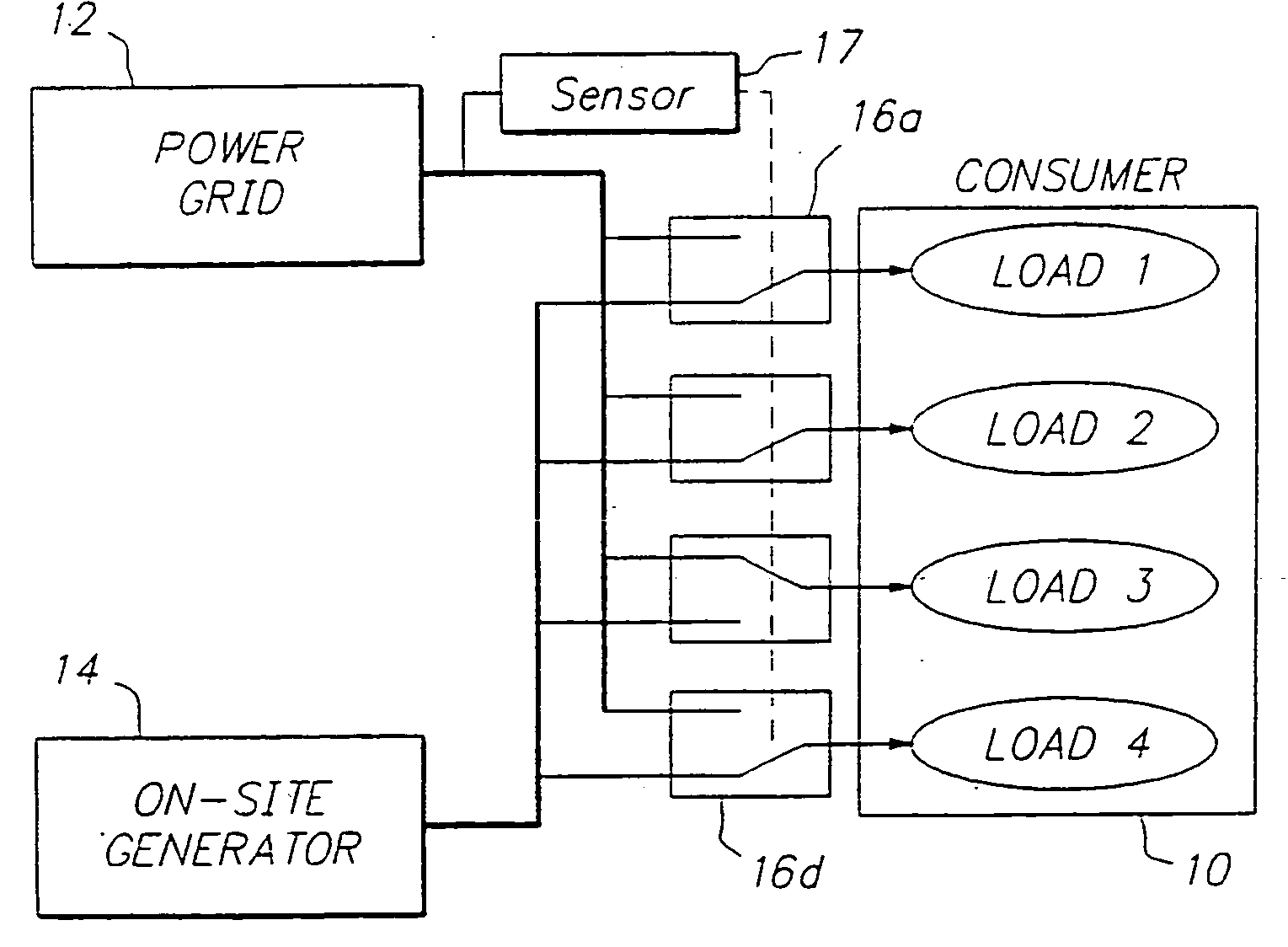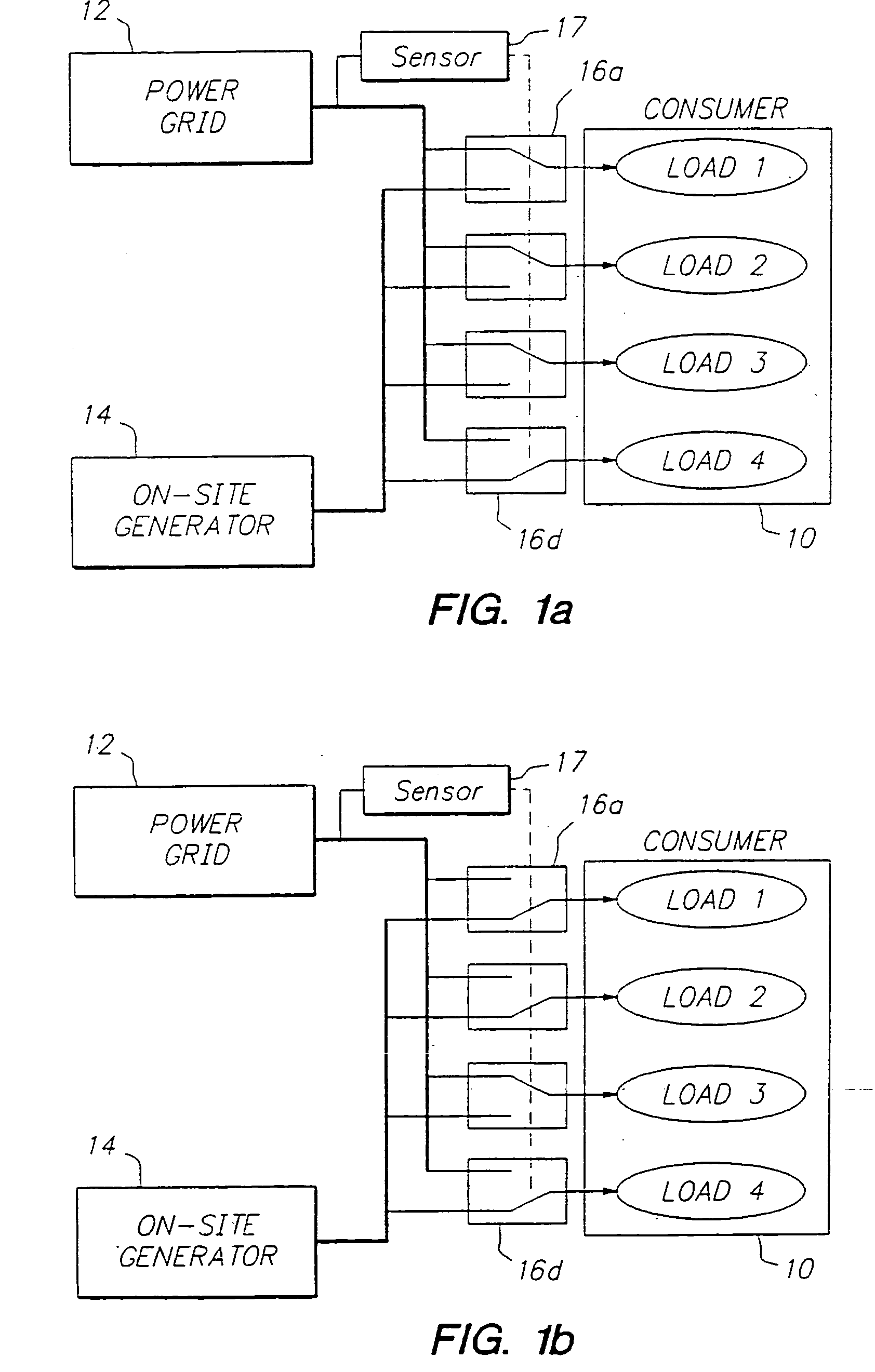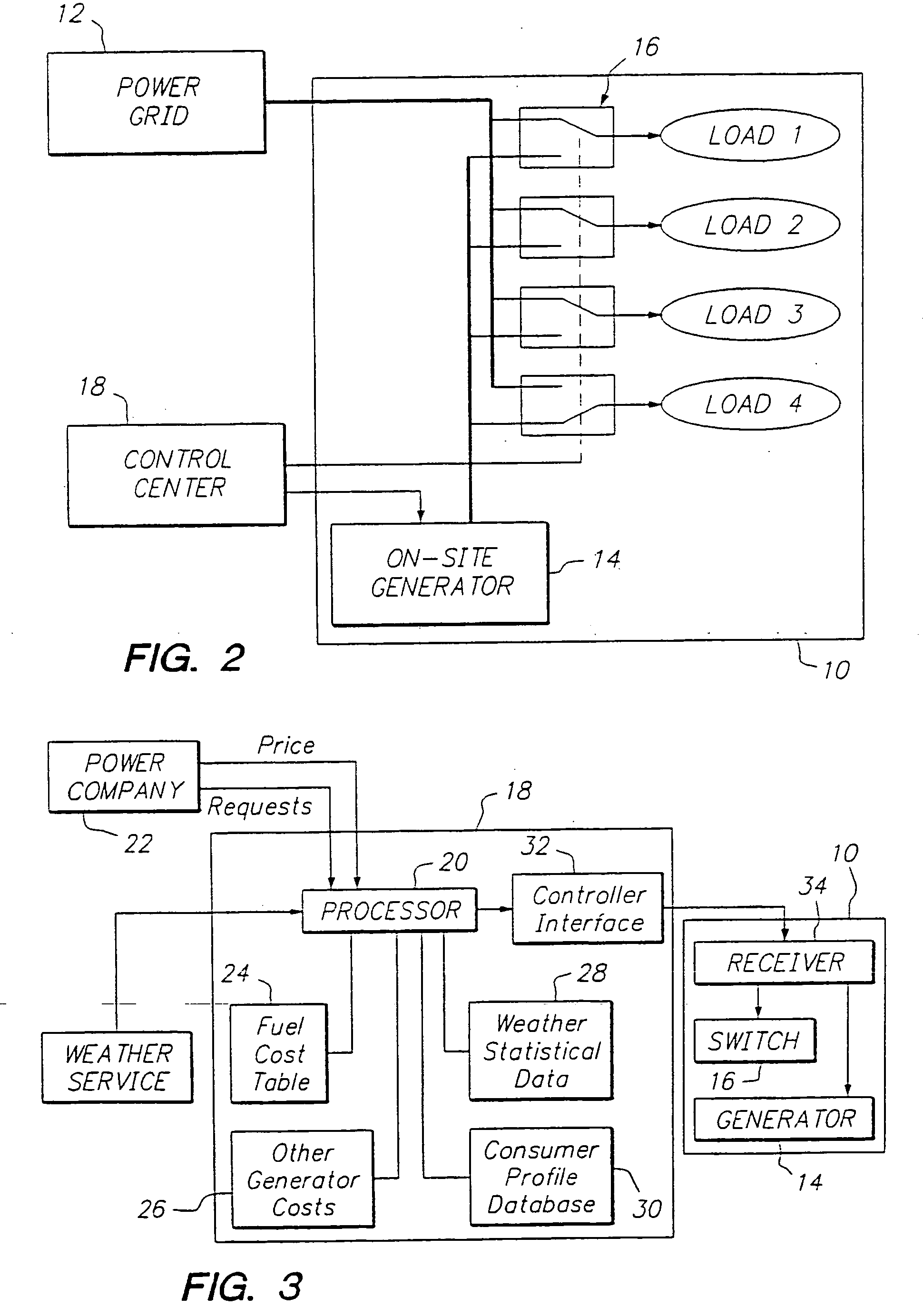Power distribution/generation system
a power distribution and generation system technology, applied in the direction of lighting and heating equipment, process and machine control, instruments, etc., can solve the problems of customers losing power for hours, days or even weeks at a time, and certain inconveniences,
- Summary
- Abstract
- Description
- Claims
- Application Information
AI Technical Summary
Benefits of technology
Problems solved by technology
Method used
Image
Examples
Embodiment Construction
[0020] Generally speaking, the present invention is directed to an arrangement in which power generation equipment is located at the site of a consumer, and provides electrical power that supplements and / or replaces the power delivered by a centralized power distribution network, such as those affiliated with regional power utilities. To facilitate an understanding of the invention, it will be described hereinafter with reference to its use in connection with the power requirements of commercial enterprises and light industry. It will be appreciated, however, that the practical implementations of the invention are not limited to these particular applications. Rather, in view of the reliability and economic advantages offered by the invention, it can be used by all types of electrical power consumers.
[0021] A simplified overview of one implementation of the invention is illustrated in'the block diagram of FIG. 1a. An electrical power consumer 10 may have a number of different types ...
PUM
 Login to View More
Login to View More Abstract
Description
Claims
Application Information
 Login to View More
Login to View More - R&D
- Intellectual Property
- Life Sciences
- Materials
- Tech Scout
- Unparalleled Data Quality
- Higher Quality Content
- 60% Fewer Hallucinations
Browse by: Latest US Patents, China's latest patents, Technical Efficacy Thesaurus, Application Domain, Technology Topic, Popular Technical Reports.
© 2025 PatSnap. All rights reserved.Legal|Privacy policy|Modern Slavery Act Transparency Statement|Sitemap|About US| Contact US: help@patsnap.com



